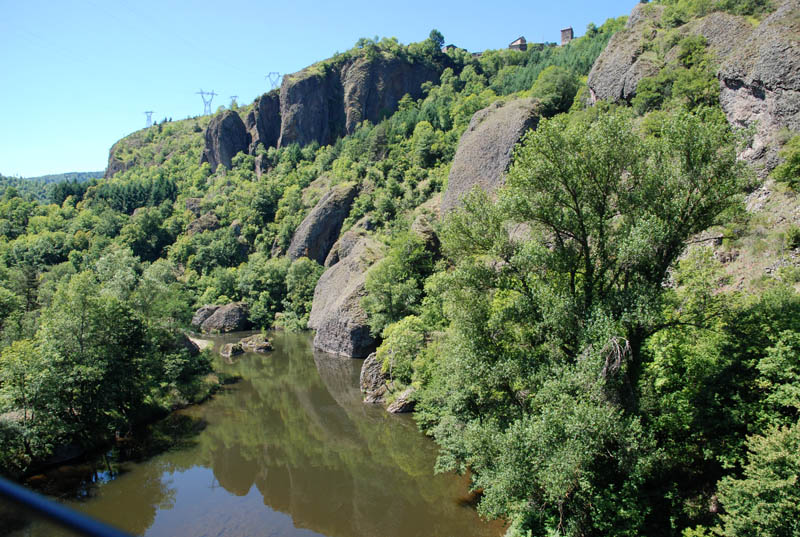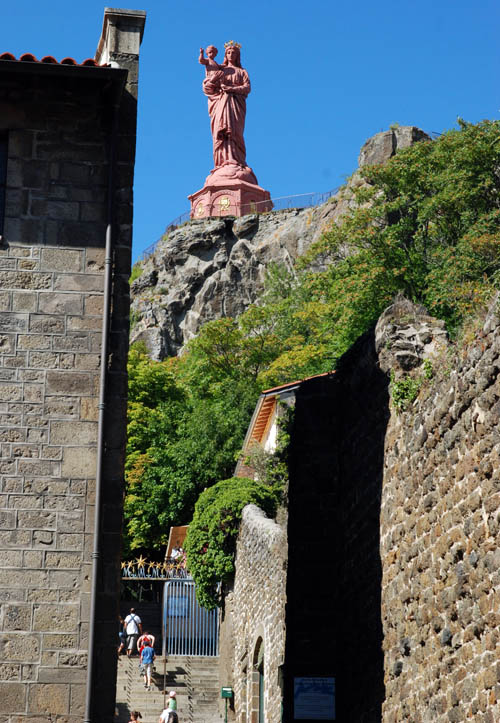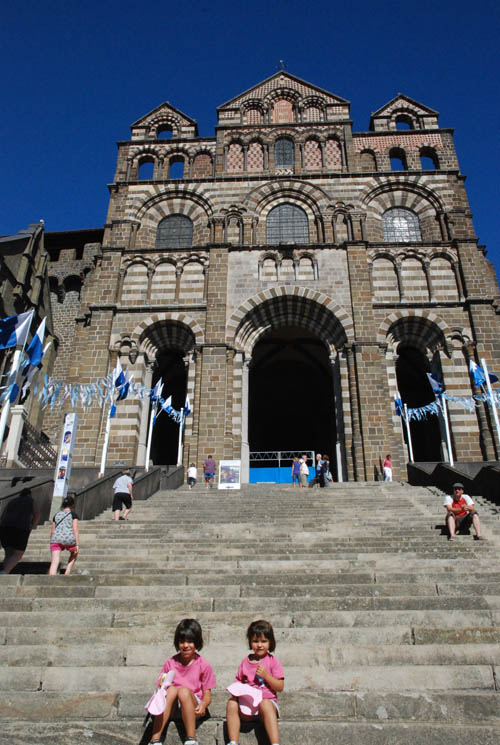Travel to France
Day 13 Issoire - Gorges d´Allier - Le Puy-en-Velay - Barcelona (762 Km.)
(in 102 Km.) Gorges d´Allier: We ride on the Tourist Train of the Allier Gorges. This tourist train rolls along 67 km of tracks through the heart of the Gorges of Allier between Langeac and Langogne, but can also be hired shorter itineraries. We choose the shorter option that runs from Alleyras to Langeac (better in reverse, but the schedule times do not permitted us this option). Because of its geomorphology, for a long time Massif Central was excluded from the French rail network. In 1853, the Compagnie du Grand Central took an interest in opening up the region. It was considered crossing through the Gorges of Allier as it was the shortest route connecting Paris to the Mediterranean. However, the technical experts of the time felt that this project would be pure utopia. However, in 1856, the Compagnie du Grand Central conducted preliminary studies on sectors Langeac-Chapeauroux, Chapeauroux-Langogne and Langogne-Villefort.

Gorges d´Allier
On April 9, 1862, after much debate, the construction of the line between Brioude and Alès was declared of public interest. The Compagnie du P.L.M. (París-Lyon-Méditerranée) promised to complete the entire route Brioude-Alès in less than eight years. At that time it was a real challenge against nature and climate, as well as the level of expertise and manpower. More than 6,000 people worked on the line. The line was completed in 1870 and the first train could pass through this landscape of Cevennes. The line is now a veritable museum of architecture outside with more than 171 civil engineering, with 50 tunnels and 16 viaducts. Stresses the Chapeauroux Viaduct, with 28 arches and 12 meters wide.

Le Puy en Velay - Saint-Michel of Aiguilhe
(in 87 Km.) Le Puy en Velay: Located along the Loire River, is a crossing point on the Way of St. James in this area of France. During the Roman ocupation Christianity was established in Le Puy, which led to his episcopal see. During the Middle Ages Le Puy was the destination of pilgrims Marian. On the other, was one of the origins of the Way of St. James. These movements, possibly initiated in the tenth century, were very important in the twelfth century. Between 1856 and 1860, under Napoleon III, was constructed, with the metal of Russian guns captured in the Crimean War, a large statue of the Virgin, which nowadays continues in Le Puy on Le Rocher Corneille : the image of Notre-Dame de France.

Le Puy en Velay - Le Rocher Corneille
The Cathedral of Notre-Dame de Puy was built in the twelfth century. This cathedral is considered unusual because of the diversity of styles, reflecting the increasing wealth of Romanesque art. Built from volcanic rocks of different colors, polychrome facade has a portico with three arches which is accessed by a huge stone staircase from a city street. The interior has beautiful frescoes of gold. It is historical monument since 1862 and World Heritage Site since 1998 for being part of the Way of St. James.

Le Puy en Velay - Cathedral of Notre-Dame de Puy
The Chapel of Saint-Michel of Aiguilhe was built in 962 on a volcanic outcrop of 85 meters. You can access this Romanesque chapel (late s. XI) of oriental inspiration by 268 steps cut into the rock. It has a triple lobed entrance, graceful arabesque decoration and black, gray and white stone tiles. The vault of the small apse is decorated with murals of the tenth century. It was built to celebrate the return of the pilgrimage of St. James.
(in 573 Km.) Barcelona: We end our trip. Part of the group decided to visit the caves of Roquefort cheese instead of visiting Le Puy en Velay. We met again on the highway near the border.